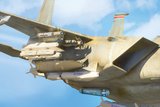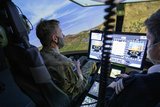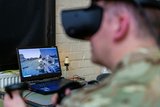How are the Five Eyes militaries adapting to a data-centric battlespace?
Brought to you in partnership with Viasat
With the Russian invasion of Ukraine, the threat of peer warfare has suddenly gone beyond the realms of military theory.
Multi-domain operations (MDO) will be central to any future conflict for the Five Eyes nations, with communications and connectivity a crucial technological focus.
MDO goes by different names – for example, Joint All Domain Command and Control, known as JADC2. The concept is already being demonstrated in real life, with Russia attempting to combine cyber and kinetic attacks and presenting multiple dilemmas across multiple domains.
While the Five Eyes is known as an intelligence-sharing partnership, it also plays a crucial role in binding together the militaries of its nations: the US, UK, Canada, Australia and New Zealand.
These countries must focus more and more on connectivity, linking together assets across different domains and various national militaries.
So as the battlespace becomes more complex, what will it mean for future warfare? At the heart of the MDO concept is the notion of a connected battlefield.
Craig Miller is president of government systems at Viasat, a satellite communications and cybersecurity provider.
He likens the emerging operational environment to the changes we have seen in our private lives, with portable devices such as mobile phones providing us with mapping technology and a range of other services at our fingertips.
In the military environment, such technology will be capable of dynamically mapping a soldier’s route, for instance, rather than displaying a static common operational picture.
‘You’ll have things like predictive routing and automated logistics and supplies, so bullets go to the place that bullets are about to run out and aren’t sitting in a warehouse 100 miles away,’ Miller explained. ‘That type of interconnectedness, automation and predictive behaviour is going to be the key.’
He noted that this would rely on data provided by vast numbers of sensors.
‘In such an environment, you can’t have a person on the loop – this all has to be done in machine time, and it has to be done reliably. Whoever does that best is going to win.’
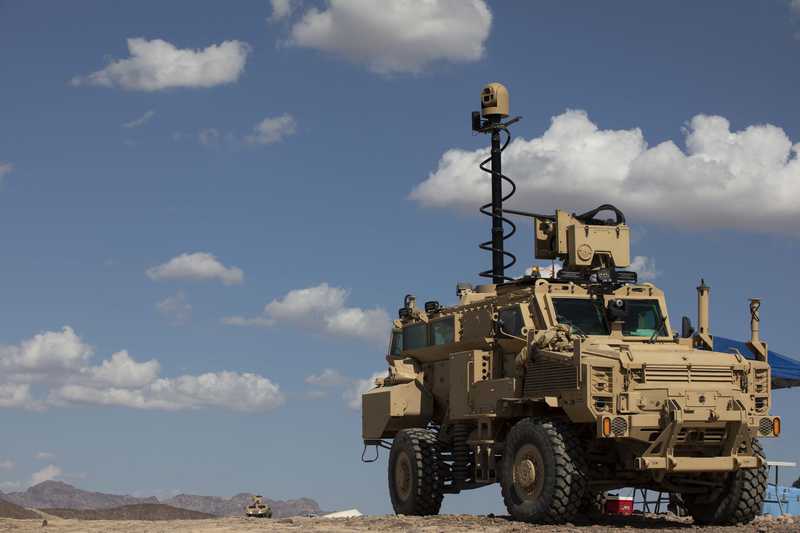
MDO is the framework for the modernisation efforts underway in the US Army, which Army Futures Command (AFC) is spearheading through six key priorities.
One of these is Network Command, Control, Communication and Intelligence Cross-Functional Team (N-CFT), which focuses on enabling reliable communications at all times, in all environments.
N-CFT is led by Brigadier General Jeth Ray. He said his team is focused on ‘information advantage at the speed of relevance’. Commanders need information to make informed decisions in a congested and contested environment:
‘The ability to rapidly communicate and share data is … what the future calls for,’ he said. To meet the demands of MDO and JADC2, it will be vital to share data, including with US allies.
As the US pivots away from small-scale contingencies into large-scale combat operations, it will need an information advantage, not just in conflict but in competition more broadly.
Brigadier-General Rob Collins is the US Army’s programme executive officer for command, control and communications – tactical.
‘JADC2 is going to be what helps us bring together and fuse command and control, fires, [logistics] and information advantage across all those domains and really get that synchronicity that’s required,’ Gen Collins explained.
‘It’s been said that the difference between a good decision and a bad decision in the past has maybe been seconds or minutes – in the future battlespace, it’s going to be milliseconds.’
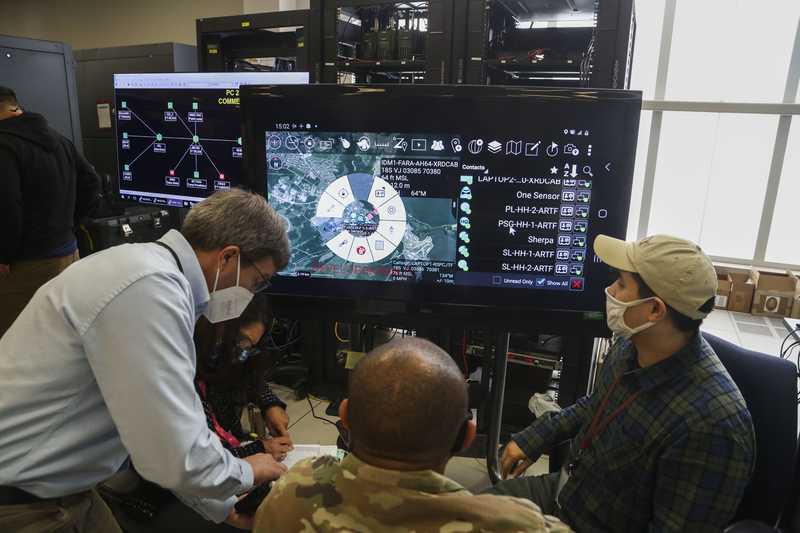
Effective communications with allies like the Five Eyes nations will be crucial.
Gen Rey said it would first be essential to understand what partners want to share and ‘go from there and really understand what we need to do to build the data fabric in the background to have machine learning and [artificial intelligence (AI)] help us’.
It will be important to translate and aggregate information and then share it with partners, he noted.
The Five Eyes nations and their other allies may not have complete control over all domains in a future conflict with peer or near-peer rivals. Secure and assured military communications and connectivity will be vital in such an environment.
‘What we’re looking at is a more resilient, more reliable network that we can provide in that environment, in a contested environment, for our operators that are going to be on the ground utilising that capability,’ said Gen Rey.
He said this capability would depend upon the suitable data fabric and the capability to share data with partners.
Gen Collins added that we are pivoting from what has been seen as a network-centric environment into a data-centric environment.
Data is going to power the future, he said, noting that the army is attempting to leverage many of the advances seen in commercial industry.
‘They’ve certainly done a lot of things when it comes to data management platforms and other [areas],’ Gen Collins said.
When it comes to the army’s primary, alternate, contingency and emergency (PACE) communications capability, whether ground, air or space, ‘we want to tie into whatever is available to ensure that we have assured communications’, Gen Collins continued. This would be wrapped in a ‘zero trust’ approach for maximum security.
This data-centric warfare will occur at the speed of machines, not humans. We must be capable of rapidly moving between systems, Miller said.
‘At the highest level, it’s the ability to deny access to a certain domain. They may be able to physically shoot down our spacecraft, so we can’t communicate through space. And so we’re going to have to figure out how to relay data from aircraft to ships to land users to get them where they need to go,’ he said.
Such an approach will be vital in an era of rapidly developing peer rivals.
‘The adversaries are going to have incredibly powerful cyber techniques, and so they may be able to bring down certain networks. We have to have a portfolio of networks that we could use.’
The US Army is looking to both the ‘what’ of modernisation, for example through its work on network modernisation, said Gen Collins.
It is also considering the ‘how’, through iterative capability sets and modular and open architectures that keep pace with technology.
He pointed to its work with the joint service coalition and industry partners, through which it is moving from a ‘big bang, deliberate “all at once” into a two-year network capability set delivery process’. This would allow the army to insert new technologies and sensor-to-shooter enhancements.
The work is informed by Project Convergence, which aims to integrate the army’s weapons and C2 systems with those of the other elements of the Joint Force.
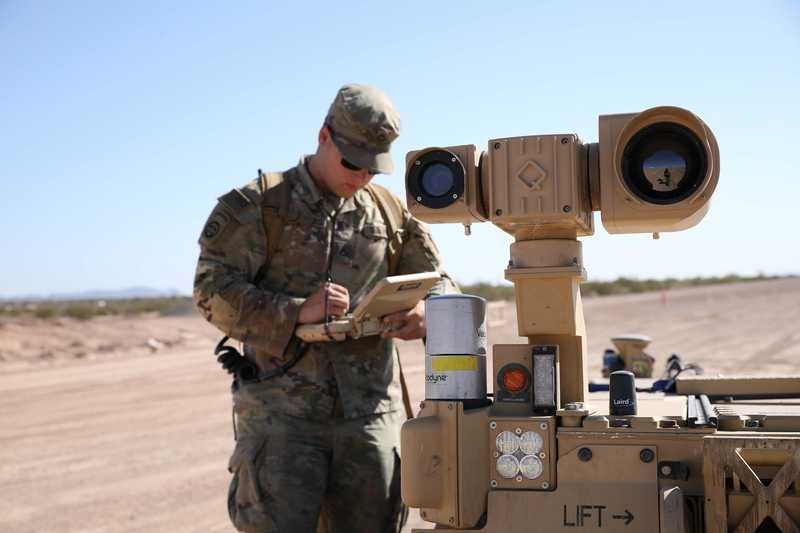
What will this future operational environment demand in technological terms? Miller pointed to the threat to communications and the vital need for gateway systems in an operational reality where there will never be a unified communication system using the same technologies and transport layers.
‘Gateway functions translate between one type of communication system and another to allow that interoperability,’ he said, much like commercial mobile phones communicate with one another even if one is on wi-fi and the other is on 5G.
‘These problems have all been solved in the commercial space and on the internet. And these solutions are directly applicable to creating interoperability among different military systems.’
While the future is likely to pose significant challenges in communications and other areas, the Five Eyes and other western allies possess advantages over authoritarian regimes, which are likely to stand them in good stead in the new era of connectivity.
At the operating level, the capability to fuse multiple militaries together has an advantage in bringing a greater scale of force to bear in a conflict situation, said Dr William Stoltz, senior adviser for public policy at the Australian National Security College.
‘Further upstream from that is … capability development, where countries are able to pool their resources, pool their knowledge, in a way to achieve capabilities that can’t realistically be achieved by single countries anymore.’
More from Studio
-
![Combat-proven capabilities: How precision-strike systems are evolving for tomorrow’s battlespace (podcast)]()
Combat-proven capabilities: How precision-strike systems are evolving for tomorrow’s battlespace (podcast)
Combat-tested technology is being reshaped to counter A2/AD threats, reduce reliance on GPS and enable faster, more autonomous targeting in complex environments. In this special podcast, experts explain how the evolving threat landscape is shaping next-generation strike capabilities.
-
![Energy evolution: How laser defence systems are powering the next phase of air defence (podcast)]()
Energy evolution: How laser defence systems are powering the next phase of air defence (podcast)
Laser-based air defence is moving from promise to deployment as global threats evolve. In this special podcast, we explore how high-energy laser systems are reshaping interception strategies.
-
![Intelligence advantage: How real-time GEOINT is reshaping military decision-making (Studio)]()
Intelligence advantage: How real-time GEOINT is reshaping military decision-making (Studio)
In today’s contested operational environment, adaptability is key. The new Geospatial-Intelligence as a Service (GEO IaaS) solution from Fujitsu and MAIAR empowers militaries by enabling intelligence advantage, combining advanced technology with human expertise to deliver actionable insights.
-
![Training Together: Unlocking Educational Excellence through Military and Industry Collaboration (Studio)]()
Training Together: Unlocking Educational Excellence through Military and Industry Collaboration (Studio)
Military training is ultimately about people. At Capita, training programmes are built on close engagement with partners, delivering an educational approach that can adapt to individual needs, cultivate leadership – and drive wider cultural change.
-
![Enhancing Military Training Through Digital Technology (Studio)]()
Enhancing Military Training Through Digital Technology (Studio)
Digital technologies offer huge opportunities for defence training. However, militaries must adopt an agile approach, placing the needs of their organisations and personnel at the centre of their efforts.
-
![Layered Defence: How new technologies are enhancing armoured vehicle survivability and manoeuvrability (Studio)]()
Layered Defence: How new technologies are enhancing armoured vehicle survivability and manoeuvrability (Studio)
As modern threats evolve, armoured fighting vehicles face a new era of challenges, from loitering munitions to kinetic energy projectiles. Advances in active, passive, and reactive protection systems are crucial to ensuring battlefield dominance, freedom of manouver and vehicle survivability.











